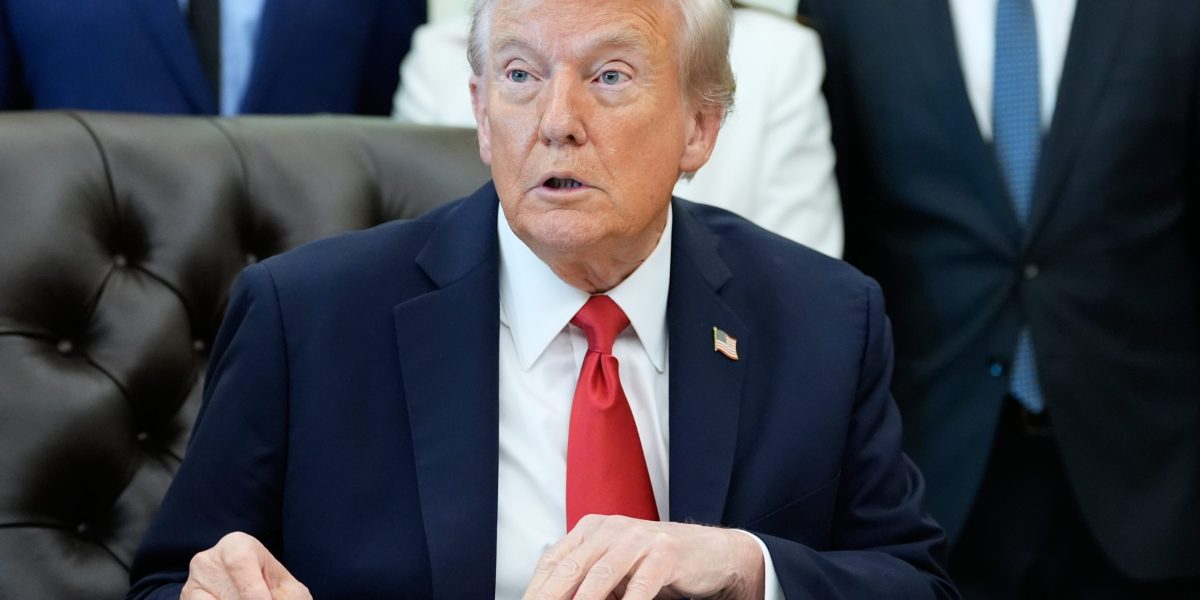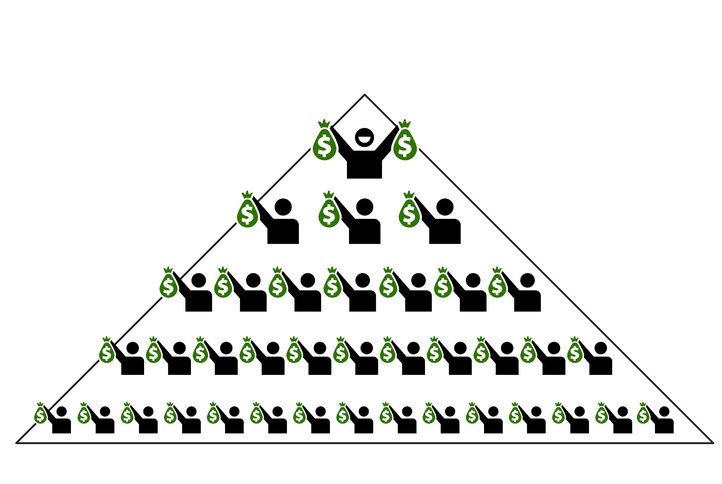US firms not keen to reshore production
It has seemed clear that Trump intends to use tariffs for multiple purposes such as to impact trade and US manufacturing, use it as a negotiation tool, and raise revenue for the US to help reduce deficit or channelize this additional revenue in personal income tax reduction. (these are the stated objectives- final outcome could be different). A survey by CNBC across 120 US companies suggests that most companies will switch to importing from countries with relatively lower tariffs (and not reshore production).
Will Trump ever be able to implement reciprocal tariffs? Perhaps not
Trump’s proposed reciprocal tariff plan has been postponed for 90 days—though we remain sceptical about whether it will ever be implemented, especially given the market turmoil that followed its announcement (higher yields and widened corporate bond spreads). Despite Trump’s characteristically bold tweets, US policymakers may be forced to adopt a softer stance toward other nations when negotiating trade terms.
With the US applying a general 10% import tariff to most countries, the trade battle is increasingly shaping up as a US-versus-China conflict. China currently imposes tariffs of up to 125% on US goods. In response, the US levied a steep 245% tariff on Chinese imports—excluding electronic items. Escalating the situation further, China has suspended exports of six heavy rare earth metals and rare earth magnets, crucial components for global automakers, aerospace firms, semiconductor companies, and defence contractors.
Meanwhile, over 50 countries with significant export exposure to the US are rushing to secure bilateral deals. India, however, is taking a more measured approach. Key sticking points include US demands for greater dairy access, India’s Minimum Support Price (MSP) regime, agricultural protections, patent laws in the pharmaceutical sector, and digital data storage regulations. For now, both sides have finalized the terms of reference, with initial talks scheduled to begin in May.
Smaller economies are equally dependent on the US and China for their trade and investment. Taking sides will not be easy.
The US will try and form a trade alliance with most other nations against China. But today, most smaller countries are equally dependent on both China and the US for their FDI and trade partnership. The US walking out of EU defence security may not have set a good precedence for Asian counterparts. Hence, the US attempt to form alliances may be wishful thinking.
Fiscal stimulus world over – global rates could inch higher.
As Trump vows to retaliate against any counter-tariffs or currency interventions, we’re already seeing signs of fiscal stimulus emerging outside the U.S.—a form of pushback aimed at supporting domestic demand amid the trade war. This points to a likely increase in global bond supply. At the same time, many central banks are leaning toward monetary easing. The combined effect could be negative for global interest rates.For countries like India, which has so far remained committed to fiscal consolidation and primarily relied on monetary tools, this environment still supports lower rates. However, India’s fiscal position will be crucial to monitor—any signs of slippage could limit the downside for bond yields.
Poor success of DOGE. The US may not see fiscal consolidation
We do not see any dramatic fiscal tightening in the US. The roll back of reciprocal tariff means the tariff revenue wouldn’t be as much as hoped for. Further, if there is growth slowdown, it could lead to fall in revenue from elsewhere. Second, DOGE success is dimming. They have scaled down their ambition of spending cuts from US$ 2 trillion to US$ 1 trillion to now just US$ 150 billion for 2026. Finally, there are plans by republicans elsewhere which could lead to higher fiscal deficit over next 10 years (estimated by ~US$ 6 trillion). Hence treasury supply could be large.
US Treasury yields rose on capital flight
Typically, rising yields reflect either stronger growth prospects or increasing inflation risks. However, US TIPS remain largely unresponsive to the inflationary impact of tariffs, suggesting that investors are still uncertain about how inflation will ultimately be affected. As a result, the recent uptick in yields isn’t driven by higher inflation expectations.
Meanwhile, the ambitious fiscal consolidation plans floated in the US a few months ago have been significantly scaled back, and Treasury supply is likely to increase. Still, one of the more notable factors behind rising US yields appears to be capital outflows from the US to regions like Europe and Japan, as indicated by recent currency movements.
Given this backdrop, it’s prudent to remain cautious on US duration. That said, there could still be tactical opportunities in both the dollar and fixed income markets.
Dollar was supposed to appreciate; What happened?
The believed theory was that if the US slaps other economies with tariffs, the US dollar is bound to experience an offsetting mechanistic appreciation. It has not worked out that way so far. DXY has fallen to a six month low. There is a counter thought that the US would become less competitive. Investors were overweight US assets. They are selling it leading to dollar weakness.
Typically, inflation concerns would have led to higher interest rates and prospects of rate hikes and eventually USD appreciation. But as of now, the market is undecided on the final inflation outcome. US breakeven inflation rates are falling. All else equal, this increases the chances of the Fed cutting interest rates. If the Fed starts to talk dovish (not the case now), could question the monetary policy independence in the US and further weaken the dollar, despite the rising US treasury yields. Hence, in the near term it appears that the dollar could soften against some of the other safe havens like Yen, Euro may get capped. However, we are still not sure about the dollar move against Asian currencies this year.
We have noticed that increasingly post COVID- first due to super expansionary fiscal policy, then freezing of Russian assets, and now due to these idiosyncratic tariffs, the world is questioning the dollar hegemony and safe haven status of US treasuries.
Impact of dollar weakness:
Inflation and hence demand destruction in the US- stagflation risks, putting Fed in a difficult spot. One has to see if fall in asset prices is arrested by tax cuts and financial deregulation. If not, it also leads to decline in household wealth.If foreign investors fade treasury bonds, financing the US fiscal deficit will become harder. Here again, the market is talking about measures to increase banks’ and Fed’s investment capacity in treasuries, and possibility of buybacks (long duration paper switched for T-bills). It could give additional impetus to gold. US Gold ETF are starting to see net inflows since February and EM gold demand remains strong. The real concern now is that if US Treasuries begin to lose their long-held status as a global safe-haven asset—a role they’ve maintained since World War II alongside gold—it could trigger a major reallocation in global portfolios. This shift could, in turn, provide further upward momentum for gold prices.
How to think of asset classes amidst all this?
The diminishing likelihood of fiscal consolidation in the US—combined with rising global bond supply, weakening demand for US Treasuries as a safe haven, and emerging stagflation risks—makes the outlook for Treasuries less favourable. This trend could accelerate if the Fed turns dovish in response to a deteriorating growth outlook. Central banks around the world may begin reassessing their dollar reserves. As a result, the threshold for meaningful dollar appreciation and strong Treasury performance has risen. Going forward, the US may need to demonstrate stronger macroeconomic stability to sustain investor confidence.
Looking at it simply: if, with a certain level of inflation and fiscal deficit, US Treasury yields were consistently above 4% through much of 2024, then the introduction of additional risk premia along with similar inflation and fiscal deficit figures should logically push yields even higher. We are sceptical that a dovish Fed will be able to talk yields down as easily this time around, though, as discussed, Treasury is planning to manoeuvre buy banks and enable regulatory changes.
As for equities, the market will need to balance the drag from trade uncertainty against the growth boost from a reduced likelihood of aggressive fiscal tightening. Ultimately, the trajectory of US growth could be the key driver for equity performance.
In this environment of heightened uncertainty, companies with true multinational operations – able to produce and sell across borders—may prove more resilient. Meanwhile, the case strengthens for domestically focused themes this year, especially consumption-led plays over investment-led ones, and banks that stand to benefit from a monetary easing cycle.
(The author, Namrata Mittal is the Chief Economist at SBI Mutual Fund)
(Disclaimer: Recommendations, suggestions, views and opinions given by the experts are their own. These do not represent the views of Economic Times)


























